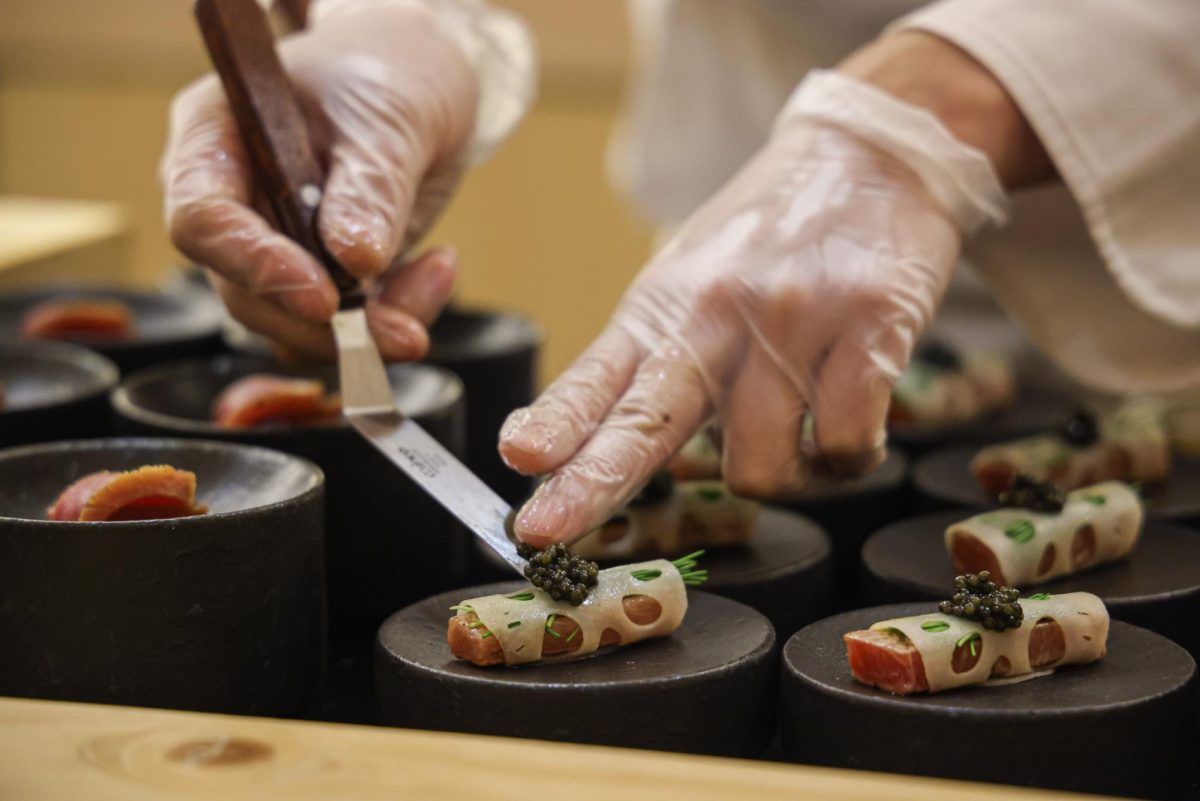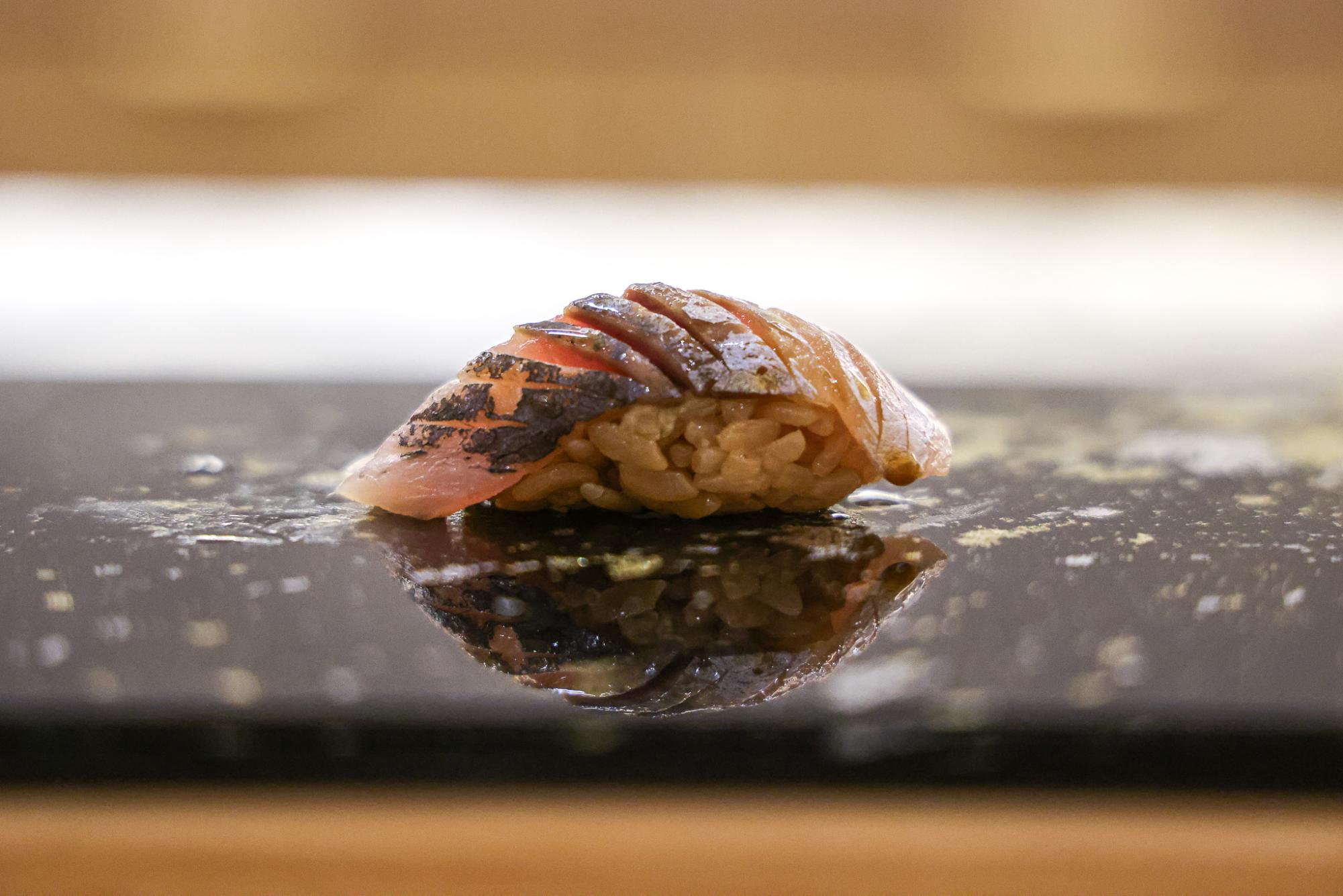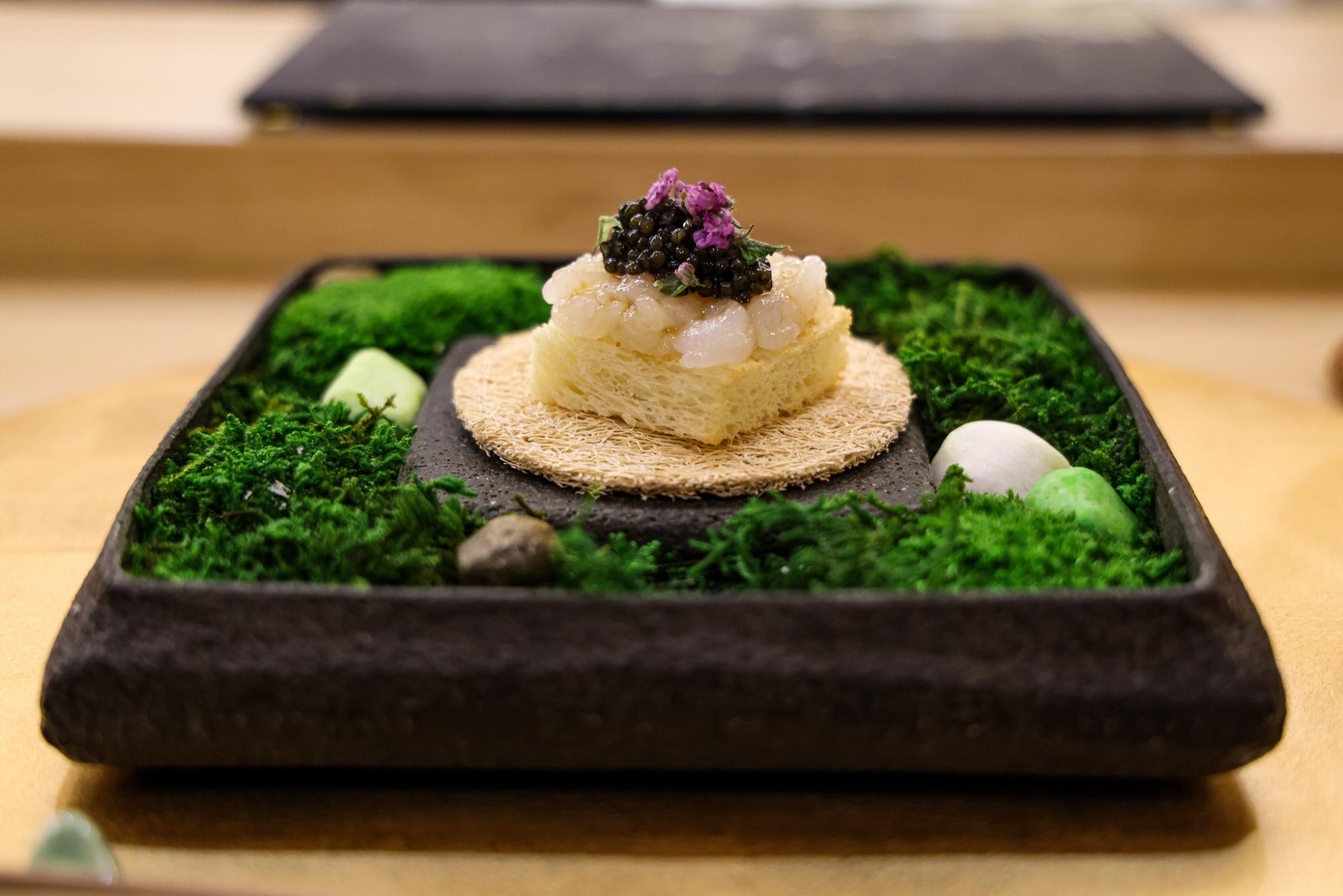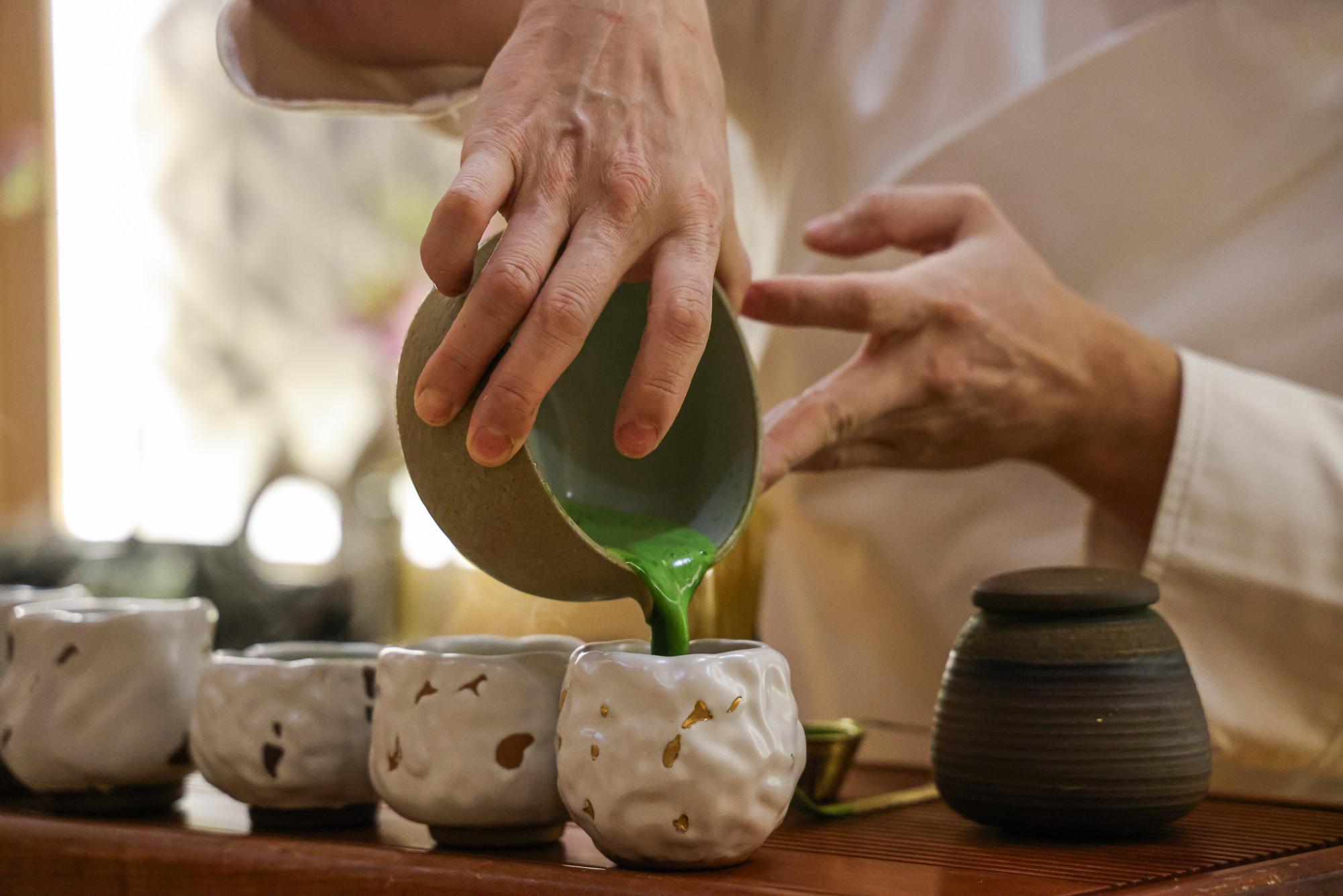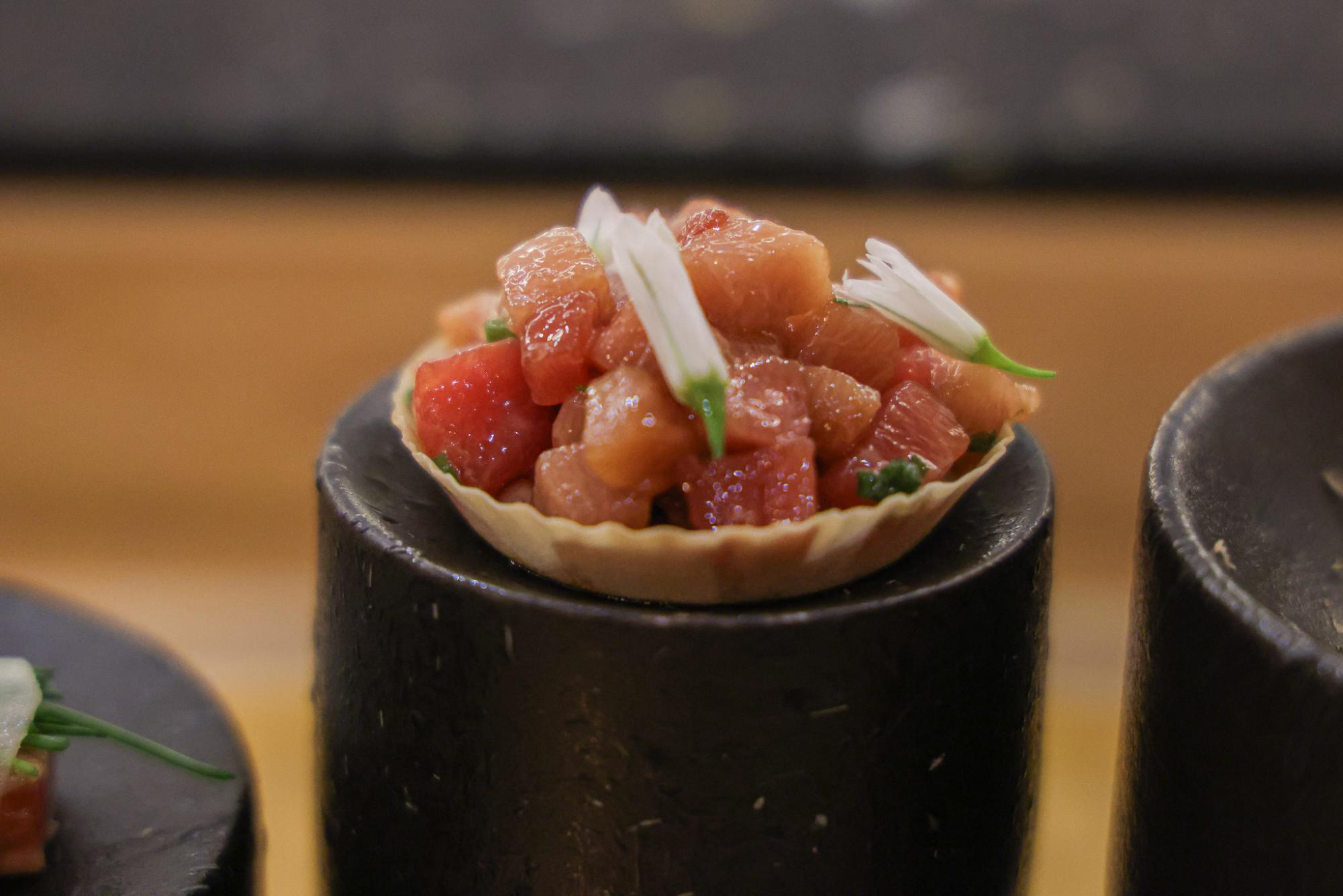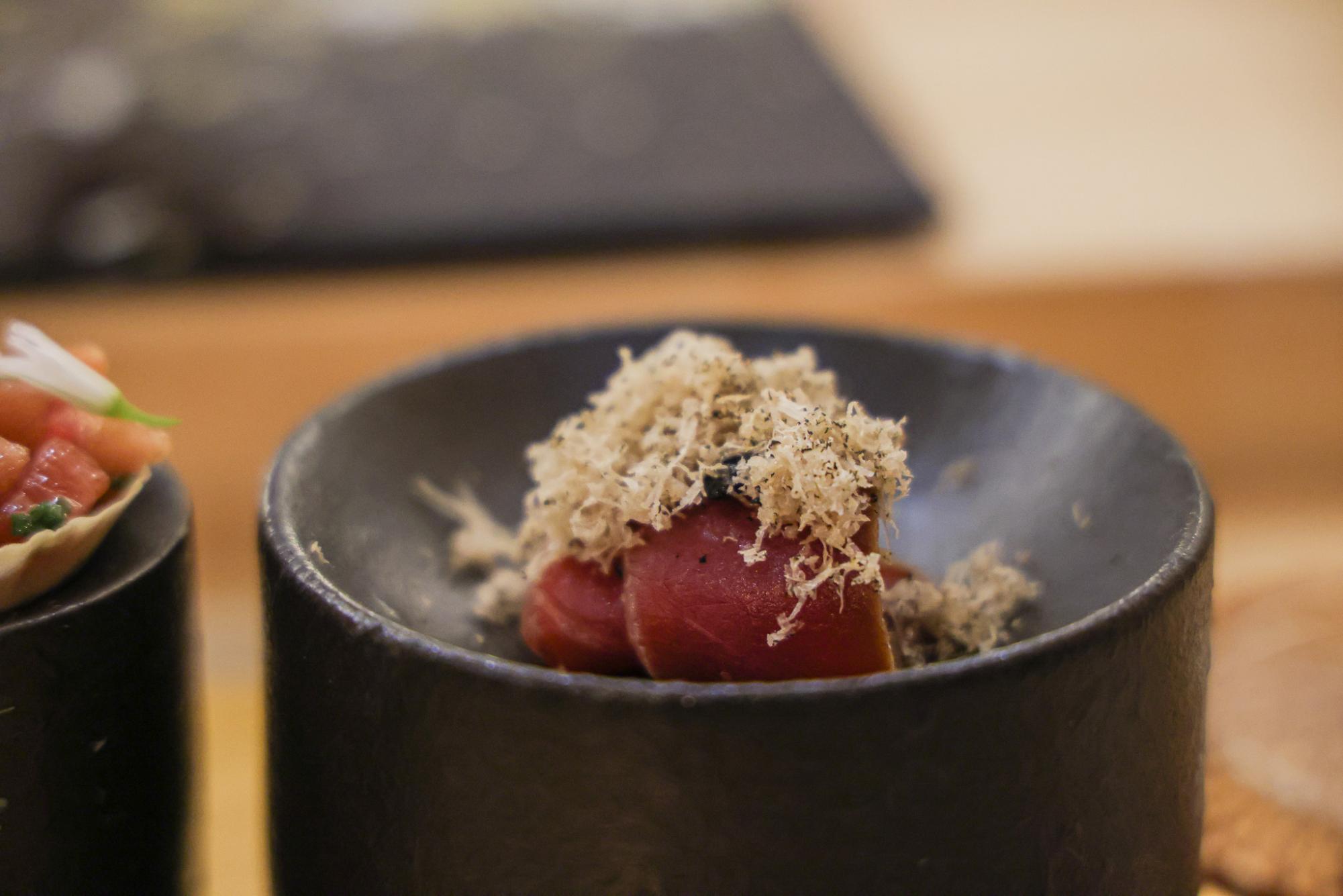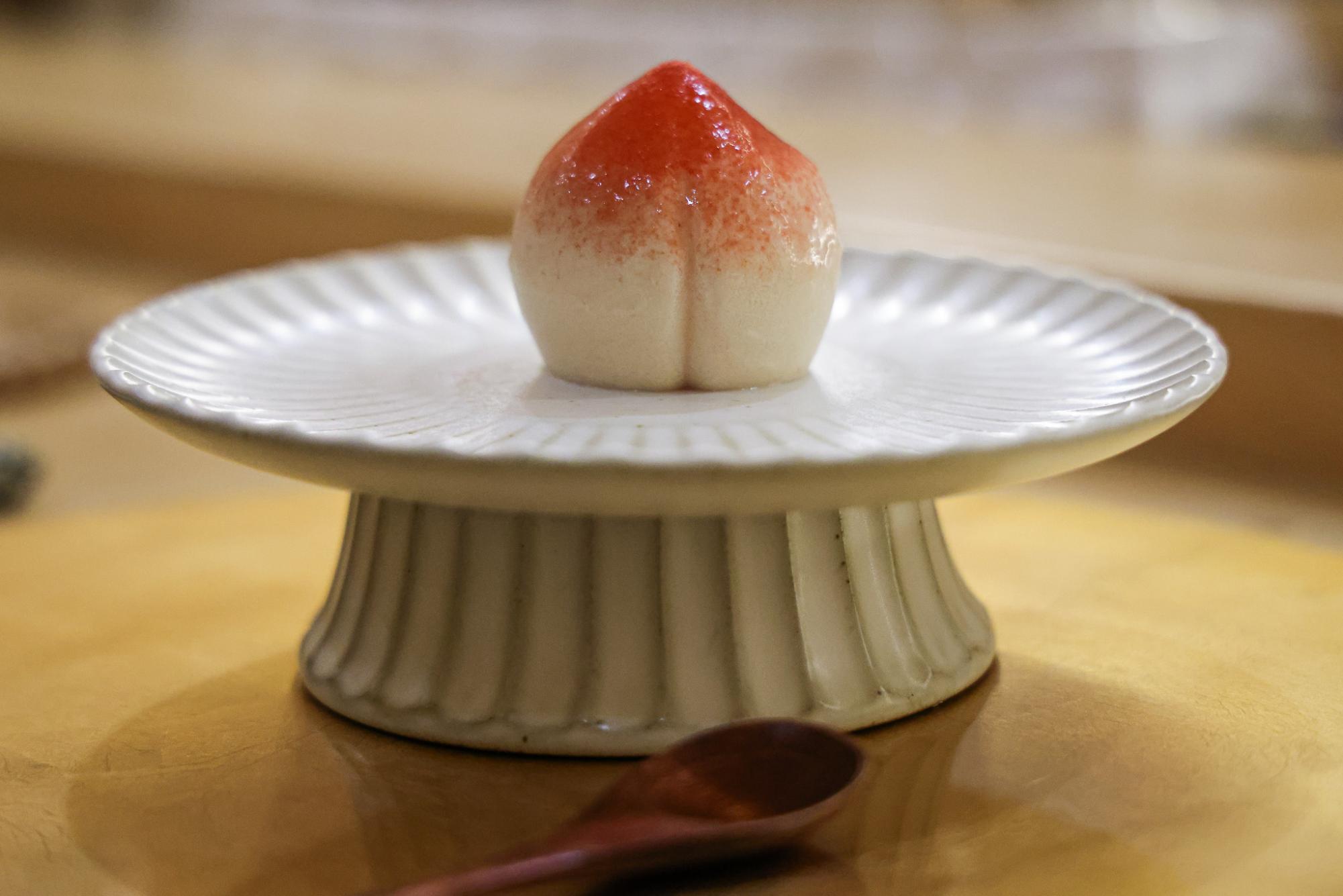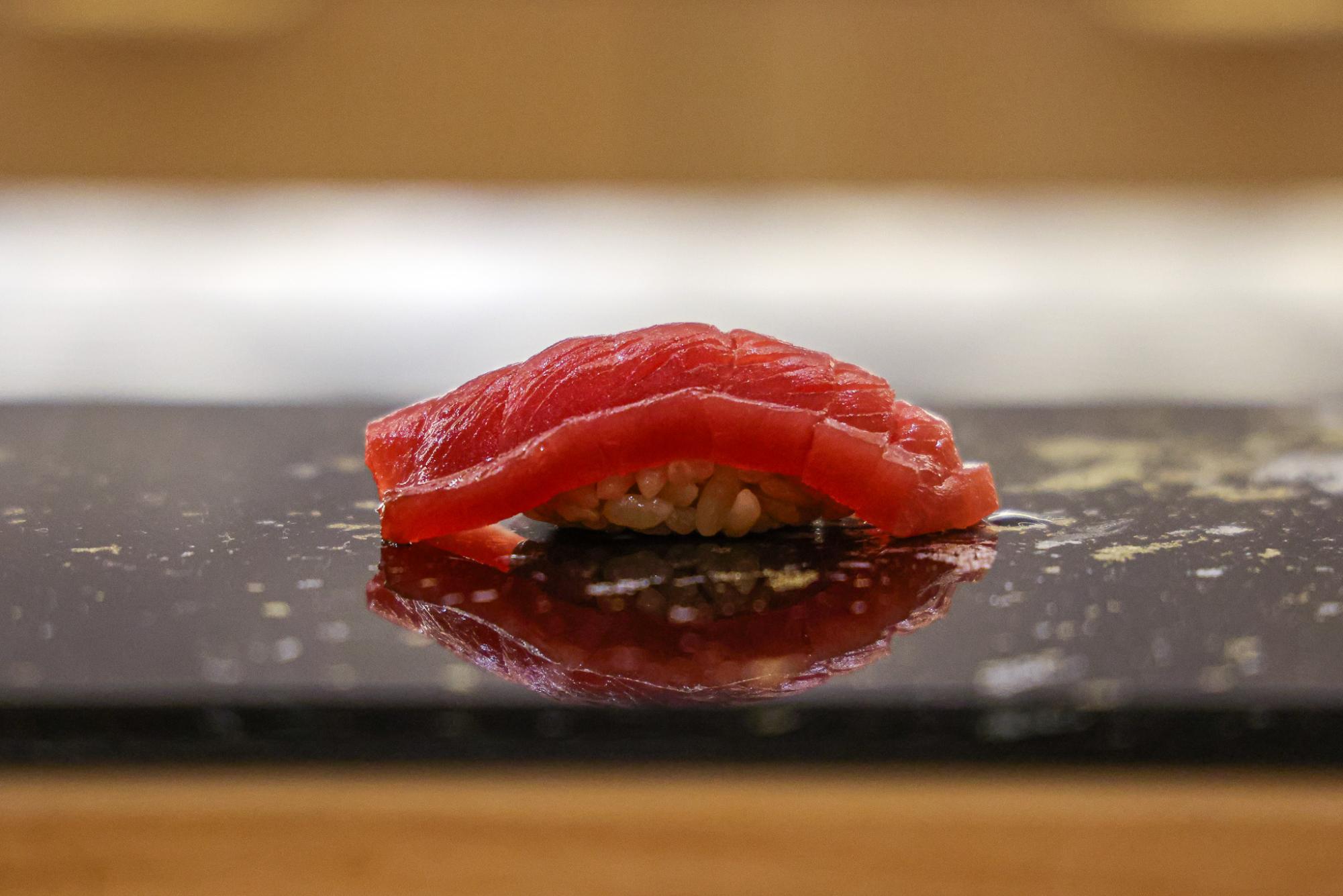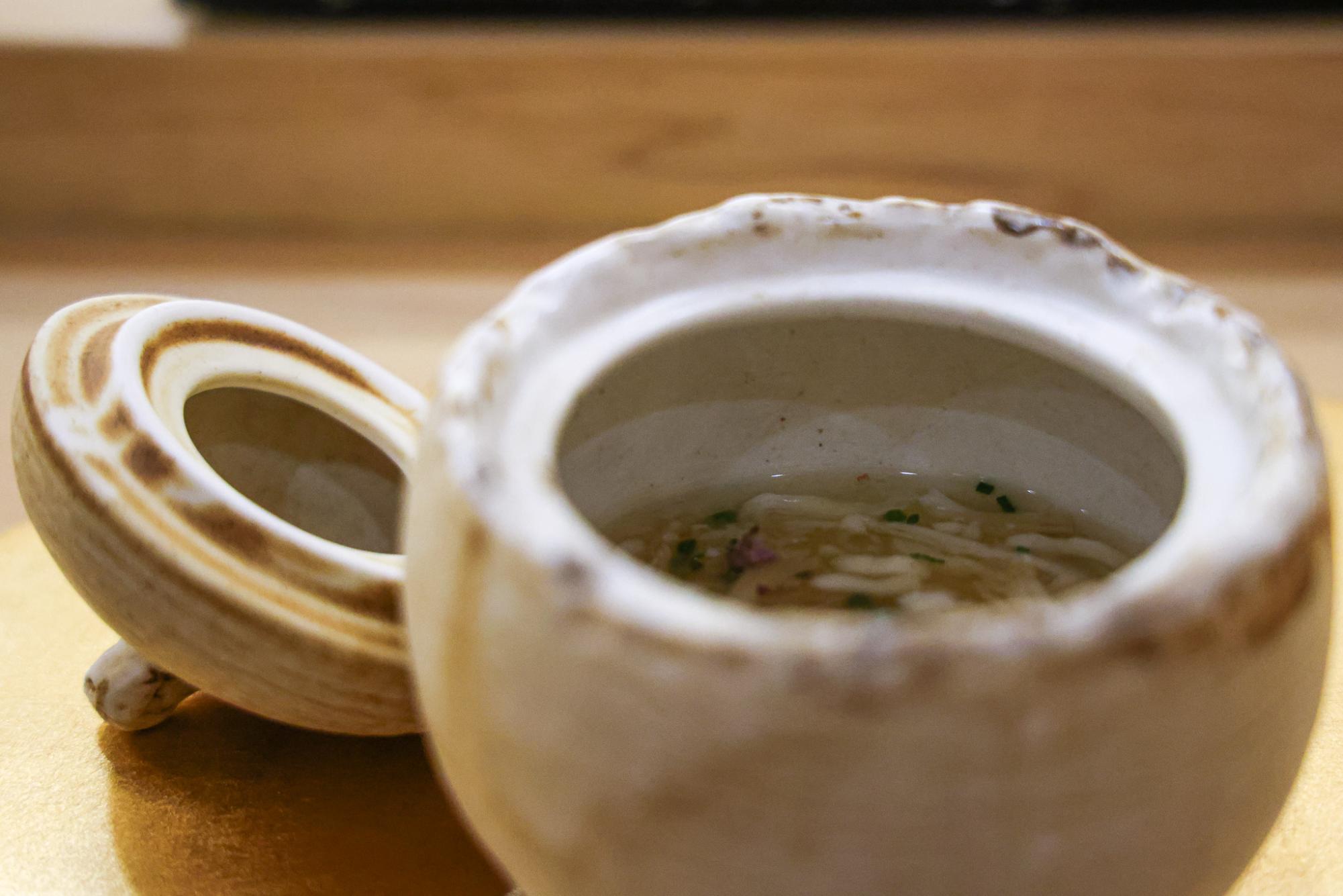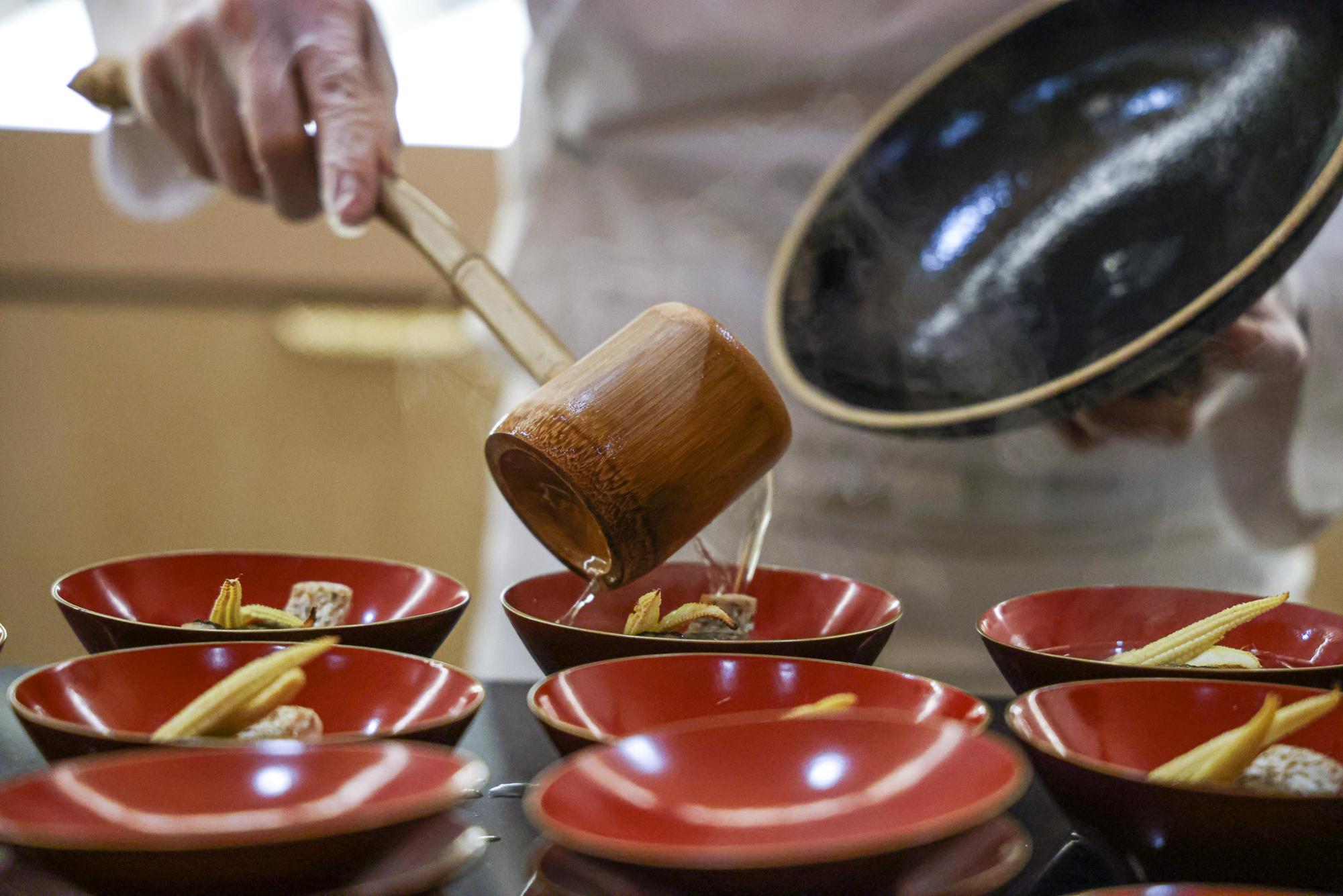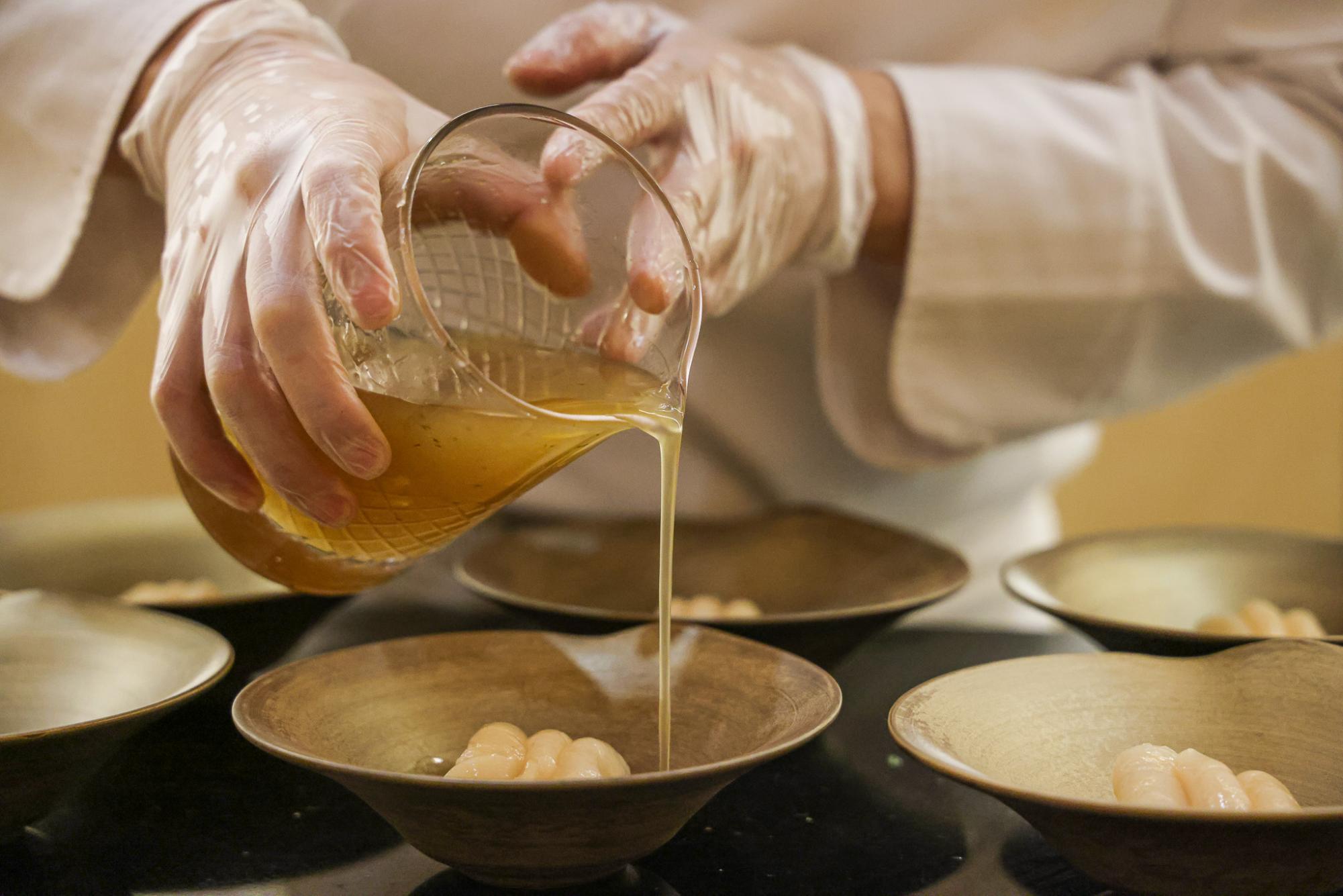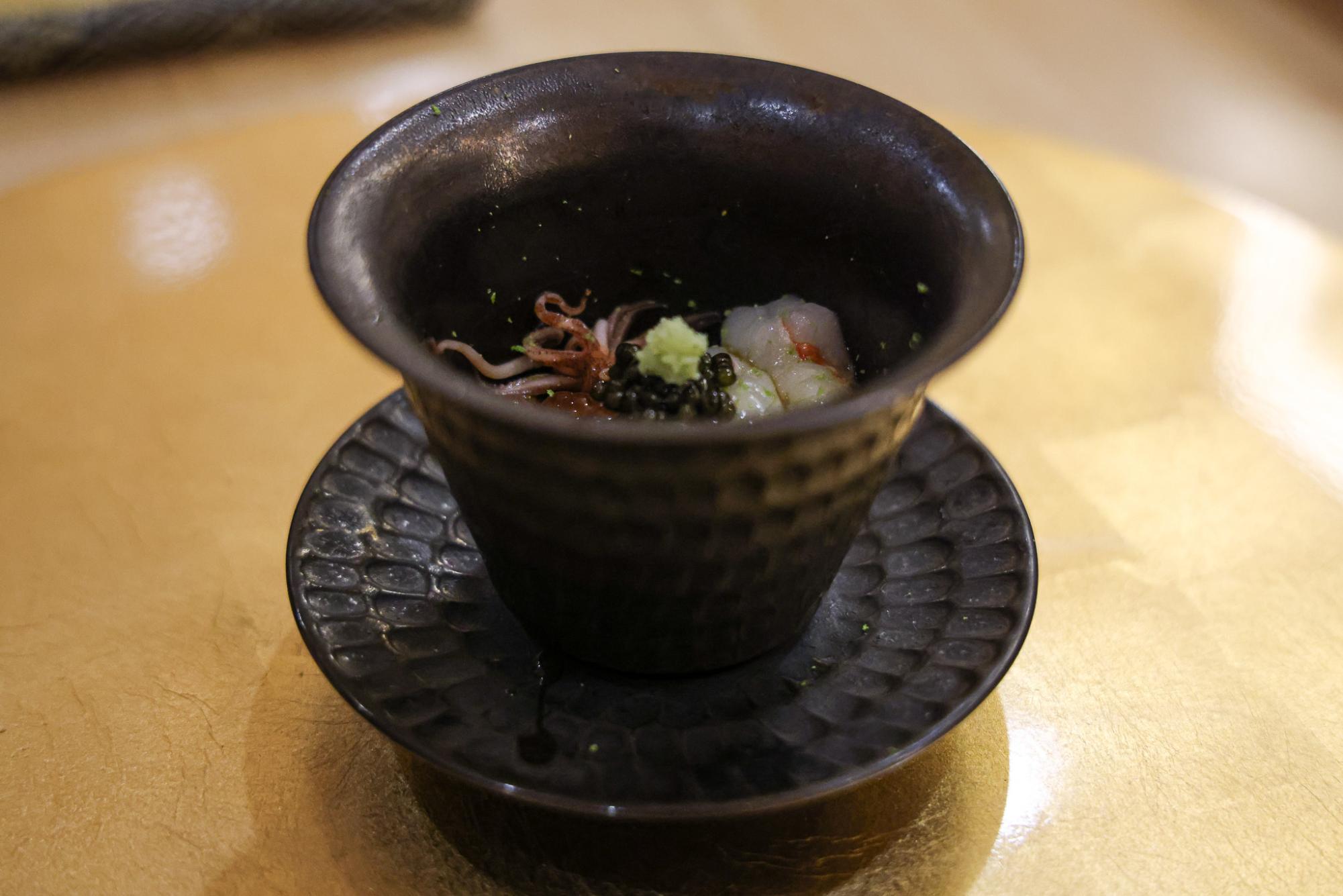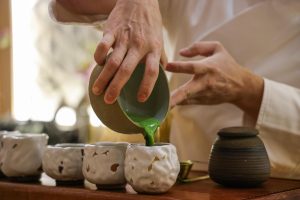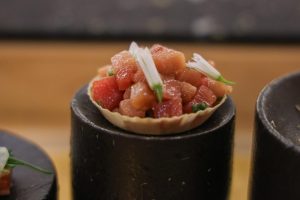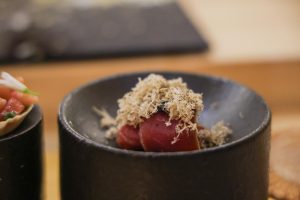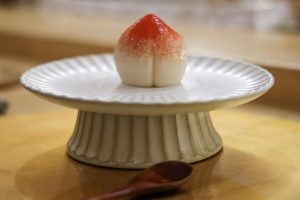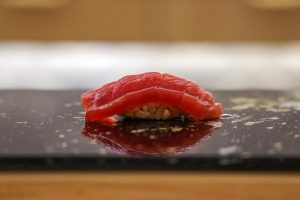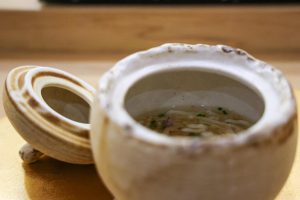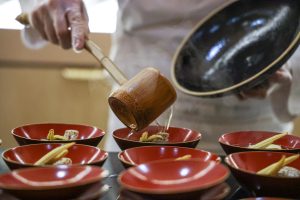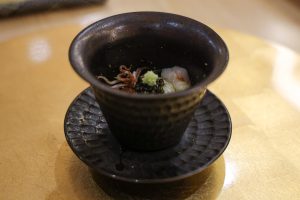Hidden away on Park Place in Tribeca, Tsubame is a calm and elegant retreat from the busyness of the New York City restaurant scene. With at most 10 guests per round of seating, at either 5:30 p.m. or 8 p.m., all at the chef’s counter, it can easily be the setting of an exclusive celebration.
Tsubame, “barn swallow” in Japanese, pays homage to chef and owner Jay Zheng’s village bird, which nests in spring and migrates in winter, signaling the changing seasons. True to its name, the restaurant’s $225 per person tasting menu offers 18-20 courses of kaiseki-inspired omakase, rotating regularly based on seasonal ingredient availability. Upon entrance, guests will not be able to view the restaurant until guided through the wooden door and seated at the chef’s counter, allowing full privacy for dining guests.
The opening plate, sakizuke, is a small bite of shiroebi, or baby white shrimp on lightly toasted shokupan — Japanese milk bread — topped with caviar. This dish is the perfect start to the tasting. The distinctive perilla seasoning stands out in the faint sweetness of the shiroebi.
The stunning three bites of the hassun includes the aburi otoro with menegi, which is wrapped in renkon, a seared fatty tuna sashimi with young green onion wrapped in lotus root. The ankimo mousse chutoro tart is a monkfish liver with medium fatty tuna tart, and the summer truffle zuke akami is a marinated tuna. The spicy menegi gives the first bite a kick, and brings a refreshing touch to the aburi otoro, but the ankimo mousse chutoro tart is my favorite. Wrapped in a thin wafer, the ankimo mousse is creamy, and brings a unique sweetness to the chutoro.
The marinated zuke akami pairs perfectly with the earthy aroma of the freshly grated summer truffle. If the first two bites are marked by their spiciness and sweetness, then the summer truffle zuke akami is more reminiscent of the ocean.
The mukozuke is hotate scallop sashimi on white asparagus with yuzu dashi, a Japanese soup stock. The yuzu dashi makes a lasting impression with its surprising depth in flavor brought out by an invigorating spicy note. The strong presence of the citrus from the yuzu pairs perfectly with the naturally mild flavors of the hotate scallop and white asparagus.
The mushimono, or a steamed dish, brings a luxurious yet familiar warmth with the jidori chawanmushi, a traditional egg custard commonly served in Japanese cuisine. It is adorned with a generous amount of king crab, and the umami of the conpoy — dried scallop — dashi elevates the simplicity of the chawanmushi. The perilla flavor adds a delightful twist.
The suimono is a clear soup that introduces the suzuki, a Japanese sea bass, as its centerpiece. Submerged in the awase dashi made from kelp and bonito flakes, the suzuki is served with baby corn and shiitake. The yuzu zest cuts through the already light broth with a crisp edge.
The gohan is a cooked rice dish, which includes a selection of eight nigirizushi and a donburi topped with sea urchin and salmon roe, caviar and shrimp. The nigirizushi includes an array of different seafoods, and the vinegar rice has a notably darker shade and is rather acidic, perhaps too acidic for my own preference. That said, it does not completely overpower the charming umami of in-season seafood, which is handled with detailed care — chef Zheng told us that the sashimi is pre-cut in large pieces and placed on the counter to rise to room temperature, before serving in thin slices on the nigiri. Otherwise, the low temperature would cause taste fatigue, preventing the experience of the full flavor.
The mizumono is a peach panna cotta presented like a miniature peach and served with Uji matcha. While aesthetically pleasing, the peach panna cotta is not as awe-inspiring as the previous courses. I appreciate the innovative attempt in the overall texture, which resembles delicately shaved ice. But, I could pinpoint neither the peach nor the panna cotta in it. Overall, it is an enjoyable dessert, but slightly lacking — especially in comparison to the strong flavors of the preceding courses.
Tsubame leaves its guests full without the weighed-down fatigue after a feast. Seating at the chef’s counter allows for direct observations and interactions with the chef, fulfilling any curiosity about the omakase preparation and guaranteeing freshness. While pricey, the fine-dining omakase is more than just a meal, but an experience.
Contact Katie Liao at [email protected].























































































































































